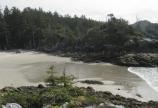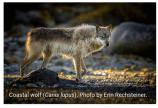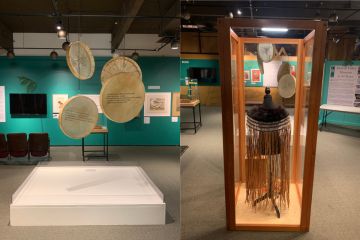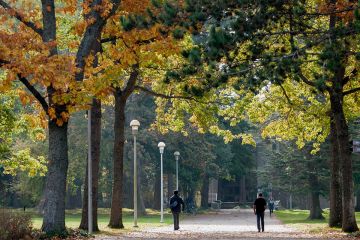A digital field guide for BC central coastal species
- Anne MacLaurin
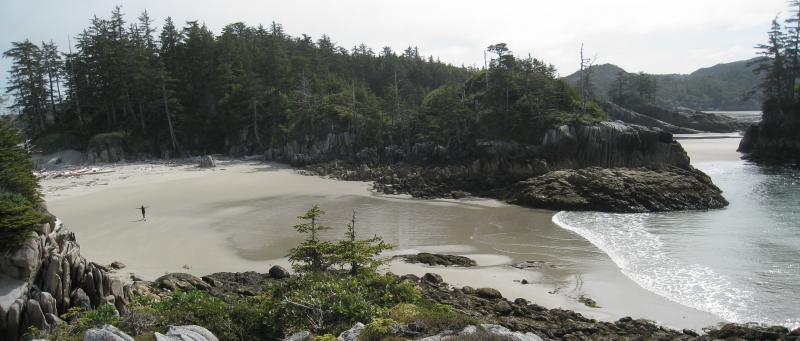
Take a virtual tour from seaweeds and sea stars to wolves and eagles, with a new digital field guide. The guide provides experts and amateurs with a tool to identify over 700 species in the Great Bear Rainforest to help deepen our appreciation of the biodiversity along BC’s central coast.
The guide for phone, computer and tablet is a collaborative project developed by UVic community ecologist and conservation biologist Brian Starzomski, with UVic graduate student Chanda Brietzke and UVic alumna Kelly Fretwell, as well as support from the Hakai Institute and involvement from its researchers.
“To me one of the great things about the app/website is that it covers a wide range of taxa—vascular and non-vascular plants, mammals, birds, seaweeds, fish, sea stars, crabs, etc.—so instead of carrying around multiple field guides all you need is your phone or tablet,” says Fretwell.
The free app, Central Coast Biodiversity, has a current inventory of 210 plants, 80 birds, 120 seaweeds, 190 marine invertebrates and 20 mammals and reptiles. Most conventional field guides include nowhere near the variety or number of species.
“We've really tried to craft it so that can be equally interesting and useful to a range of ages and backgrounds: kids, adults, students, researchers, eco-tourists, citizen scientists, and everyone in between,” says Fretwell.
The idea for the app came from the ongoing field course that Starzomski teaches at the Hakai Institute on Calvert Is. The ES470 course requires students to identify and describe 50 species. After teaching the course for five years, Starzomski realized he was getting a huge list of species with photos and descriptions. After writing a proposal, Starzomski received funding from the Hakai Institute to develop the app with supporting funding coming from the McTaggart Cowan Professor of Biodiversity Conservation and Ecological Restoration funds, Natural Sciences and Engineering Research Council (NSERC), Canada Foundation for Innovation (CFI), and BC Knowledge Development Fund—making it possible to hire former ES student Kelly Fretwell to work on the website.
"We created this website to showcase the incredible biodiversity BC's Central Coast has to offer in an easy to access format that gives photos and interesting information about the species,” says Starzomski.
“BC has the most species of any province in Canada, and coastal BC in particular is amazing; we all know about the wolves and whales but really there are so many other beautiful and under-appreciated creatures out there,” continues Starzomski.
“We've tried to keep the descriptions from being too technical, adding in definitions and explanations when necessary, and we've tried to spice each page up with something cool or unique about that species,” explains Fretwell.
Fretwell goes on to describe that even though the app is focused on the Central Coast, the ranges of a lot of these species extend along the entire BC coast and in many cases stretch further north to Alaska and south to California, meaning, she says, its usefulness for identification goes beyond the Central Coast.
“But beyond its functionality as an ID guide, I think the project is important in showcasing the amazing biodiversity of an area that so few people in BC get to visit, let alone the rest of Canada and the world,” says Fretwell.
“BC is such a stronghold for biodiversity but the Central Coast is relatively remote and difficult to access, so I think it's fantastic that we get to give people a virtual tour of the area via the plants and animals that call it home,” she continues.
Students, researchers and the general public can interact with the app to find important and fascinating information, including a growing list of species at risk.
Download the app from the Biodiversity of the Central Coast website.
Photos
In this story
Keywords: app, biodiversity, community, research, sustainability, technology, wildlife, geography, environment

